When speaking of the sakura season in Japan, most people will likely think about the beautiful Ueno Park in Tokyo. However, did you know that even after the cherry blossom season in Tokyo is over, you’ll still be able to see cherry blossoms in other areas of Japan?
If you have already been to most of Tokyo’s well-known cherry blossom destinations and want a more off-the-beaten-path experience, consider exploring cherry blossom hotspots in Northeastern Japan!
Home to many enchanting cherry blossom spots, Northeastern Japan, also known as the Tohoku region, is filled with plenty of must-visit destinations, especially during springtime. In this article, we’ve curated a list of the top places to view sakura in Northeastern Japan, all conveniently accessible via the train and the Shinkansen. Read on and find out how you can save up while travelling to these places with ease!
TripZilla Tip: To make exploring Northeastern Japan much easier, we recommend purchasing the JR EAST PASS. Not only does it save you time and money when riding the Shinkansen, but it also allows you to hop between popular locations in Northeastern Japan with just one rail pass. How convenient!
Also read: The Best Places to See a Breathtaking Springtime in Tohoku
Best sakura spots in Northeastern Japan
1. Hirosaki Park, Aomori
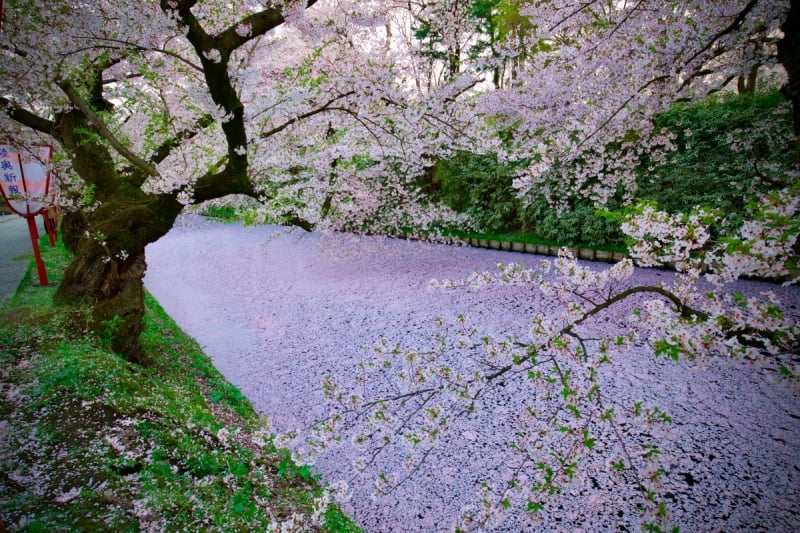
Image credit: Kazuo ota
One of the most popular sakura spots in the Tohoku region is Hirosaki Park, home to over 2,500 cherry blossom trees, picturesque blossom-covered tunnels, an iconic moat covered by cherry blossom petals (known as a cherry blossom carpet), charming picnic spots, and most importantly, the majestic Hirosaki Castle. Needless to say, this place is perfect for a hanami experience. What’s more, there are also rental boats available, allowing visitors to indulge in a unique experience of admiring cherry blossoms from the moat.
Each year during the cherry blossom season — which typically ranges from mid-April to early May — the park extends its opening hours until late evening, featuring enchanting cherry tree light-ups. To get here, simply board the Tohoku Shinkansen from Tokyo to Shin-Aomori, and then switch to the Ou Line to reach Hirosaki Station, this train route is covered by the JR EAST PASS.
Take the central exit, and hop on a quick 15-minute bus ride on the Dotemachi Loop Bus. Alternatively, you can also reach the park from the station on foot in about 30 minutes.
2. Kakunodate Samurai Residence Street, Akita
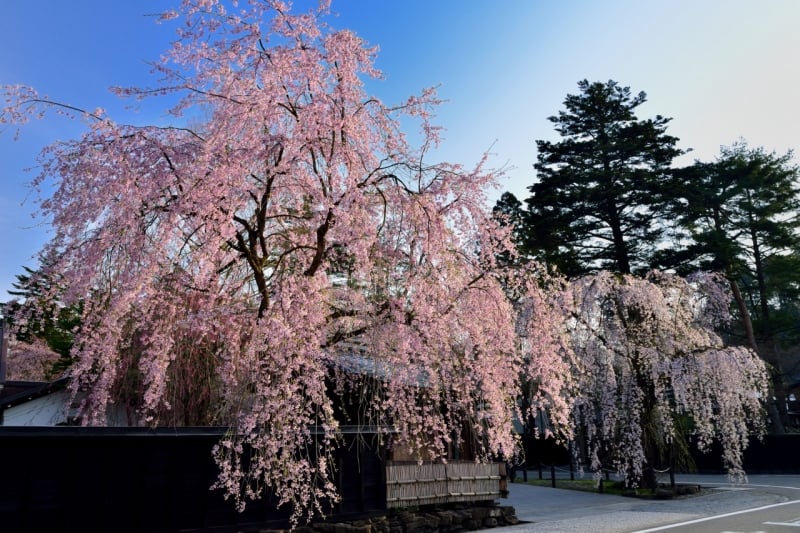
Image credit: Tohoku Tourism Promotion Organization Official Website
Did you know that the town of Kakunodate in Akita boasts an ancient samurai district? This gorgeous town featuring well-preserved samurai houses and an abundance of weeping cherry trees, is even often hailed as the “Little Kyoto of Tohoku”! Here, you can travel back in time to the glorious Edo period and catch a glimpse of the former residences of samurais.
During the cherry blossom season from late April to early May, the street is bustling with tourists and locals enjoying hanami and visiting the Denshokan Museum, which showcases the town’s history and traditional wood crafting. The Samurai District is also conveniently located, only a 15- to 20-minute walk from Kakunodate Station. To get to the station, you can board the Akita Shinkansen from Tokyo directly to Kakunodate.
3. Kitakami Tenshochi Park, Iwate
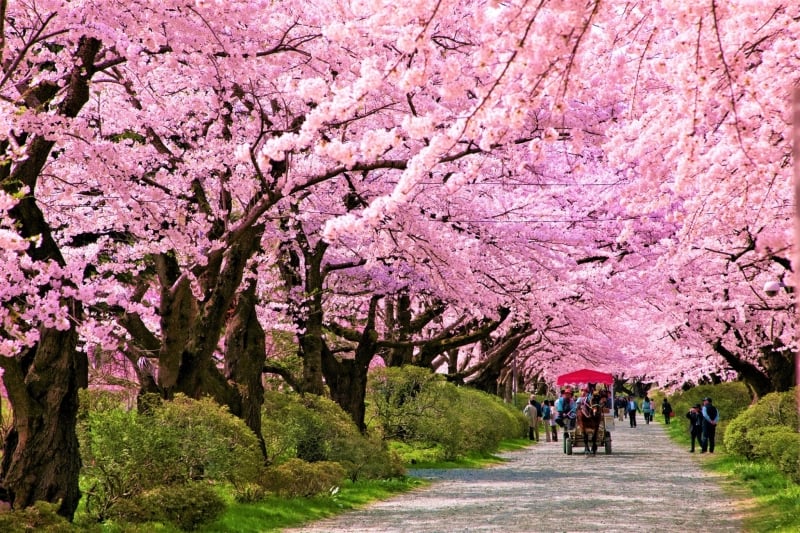
Image credit: Visit Japan Official Facebook Page
Featuring rows of dazzling pink sakura trees with a traditional village next to it, the Kitakami Tenshochi Park looks just like a dream come true. The park is adorned with over 10,000 cherry trees, planted alongside the Kitakami River from a century ago. This creates a stunning pink spectacle, particularly during the cherry blossom season from mid to late April. The annual Kitakami Tenshochi Sakura Festival is one of the top hanami activities in the area too, attracting visitors from both within and outside the country.
Next to this whimsical sakura spot is the Michinoku Folklore Village. It is a museum that features approximately 29 preserved buildings from various historical periods and offers free admission. Kitakami Tenshochi Park is approximately a 45-minute walk from the east exit of Kitakami Station, found along the Tohoku Shinkansen.
4. Senshu Park, Akita
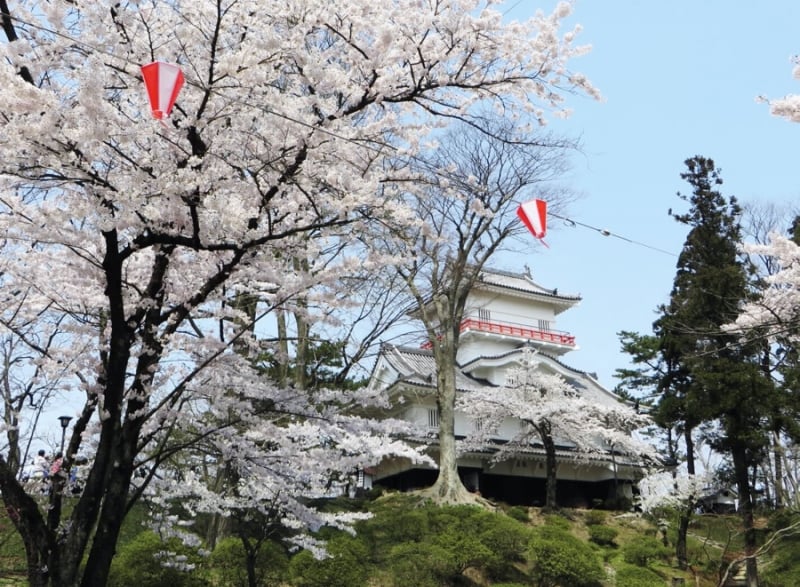
Image credit: Akita Tourism Support Center Official Website
Senshu Park in Akita stands out as one of the most popular cherry blossom viewing spots in Northeastern Japan. The Senshu Park Sakura Festival is held annually from mid to late April, showcasing around 700 breathtaking blooming cherry blossom trees, food stalls, as well as charming light displays during nighttime.
Situated on the grounds of the Kubota Castle Ruins, the park features a quaint traditional garden, allowing visitors to immerse themselves in the atmosphere of old Japan. It is also very conveniently accessible — only about a 15-minute stroll away from Akita Station on the Akita Shinkansen.
5. Nicchu Line Weeping Cherry Blossom, Fukushima
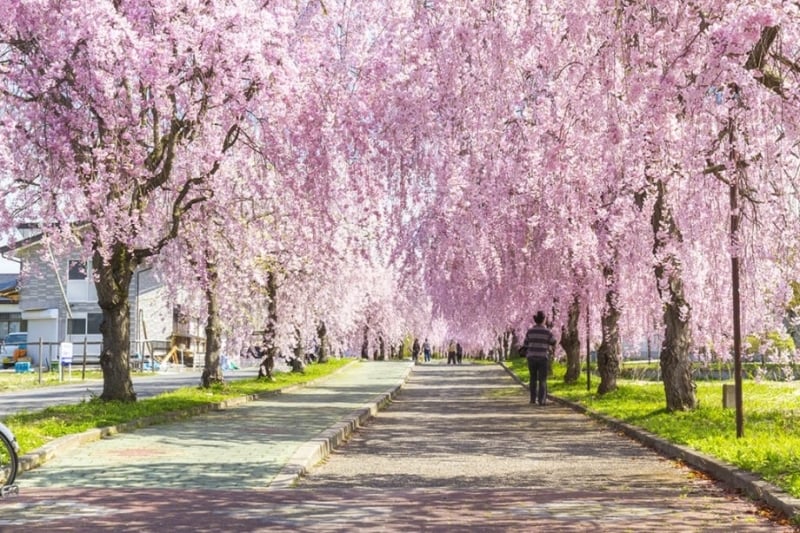
Image credit: Official Fukushima Tourism Information Official Website
Another astonishing sakura spot in Northeastern Japan is the Nicchu Line Weeping Cherry Blossom, a three-kilometre-long pedestrian and bicycle path in Kitakata City in Fukushima Prefecture. This place is brimming with a thousand weeping cherry blossom trees, creating a picturesque vista like those in romantic Japanese movies. The best time to visit is during mid to late April, when you can relish hanami picnicking amidst a spectrum of pink hues.
Admission to this gem is free, and it is conveniently situated near Kitakata Station. To get there, simply hop aboard the Tohoku Shinkansen in Tokyo, and then switch to the Ban-etsu West Line from Kōriyama Station. The Nicchu Line Weeping Cherry Blossom is just a 15-minute walk away.
6. Hitome Senbonzakura, Miyagi
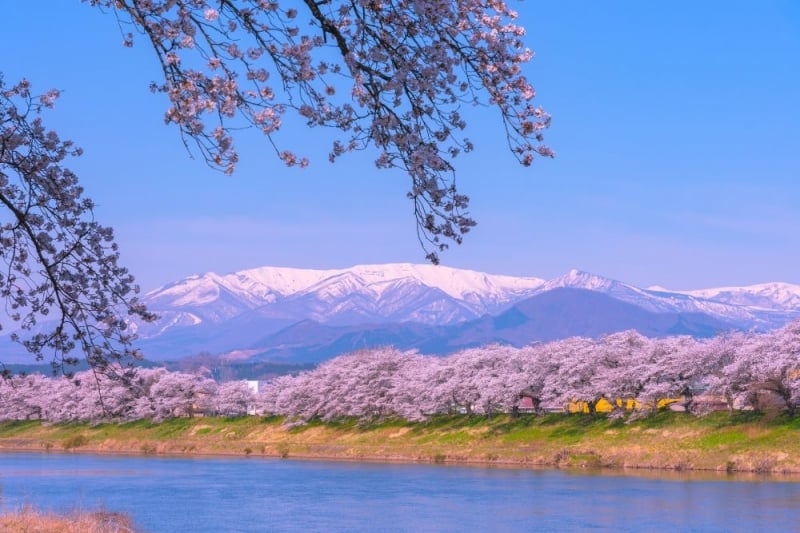
Image credit: Cheng Feng Chiang via Canva Pro
In Miyagi Prefecture, one of the most beautiful cherry blossom spots you won’t want to miss is Hitome Senbonzakura. The name translates to “1000 Cherry Blossoms at a Glance”, where the mesmerising sight of up to one thousand cherry blossom trees welcomes you along the Shiroishi River. Against this breathtaking backdrop is the majestic snow-capped Zao Mountains, creating the perfect spring scenery!
In addition to the lovely blooms, the area is also host to several sakura festivals, most notably the Ogawara Sakura Festival from early to mid-April. You could also visit the nearby Funaoka Castle Park for more cherry blossoms.
To get to Hitome Senbonzakura, hop aboard the Tohoku Shinkansen from Tokyo to Fukushima, then switch to the JR Tohoku Main Line to reach Ogawara Station. The river bank is approximately five minutes away on foot. Alternatively, you stop off at Funaoka Station, which is the next stop, and admire the cherry blossoms as the train passes between the two stations.
7. Eboshiyama Park, Yamagata
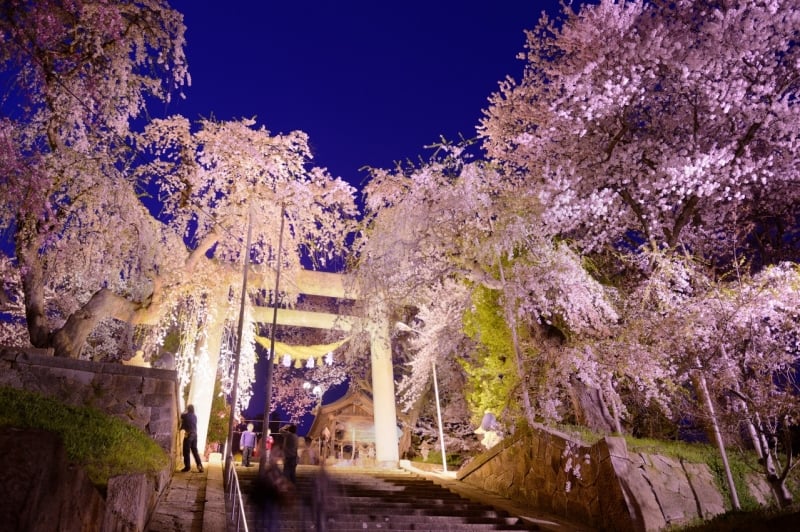
Image credit: Stay Yamagata Official Website
If you’re on the lookout for ambient cherry blossom spots in Yamagata Prefecture, look no further than the whimsical Eboshiyama Park, known for its stunning scenery, especially during cherry blossom season in spring. After all, the park is known as “Eboshiyama Senbonzakura” — Eboshiyama Thousand Cherry Blossoms.
Here, you’ll see a thousand cherry blossom trees of various varieties, some of which are over 100 years old! What’s more, the park overlooks Okitama Basin, offering stunning views of the surrounding mountains and valleys. You can also visit the Eboshiyama Hachimangu Shrine, a Shinto shrine steeped in culture and history. Best of all, the park is one of the lesser-known spots in Yamagata, meaning you’ll be able to explore the area without being crowded out by tourists.
To get to Eboshiyama Park, hop aboard the Yamagata Shinkansen, which runs from Tokyo to Yamagata directly. Take the train to Akayu Station (which is on the Yamagata Shinkansen route) and walk to Eboshiyama Park, which is about 25 minutes away. Alternatively, visitors can take a 5-minute taxi ride to the park.
8. Ashino Park, Aomori
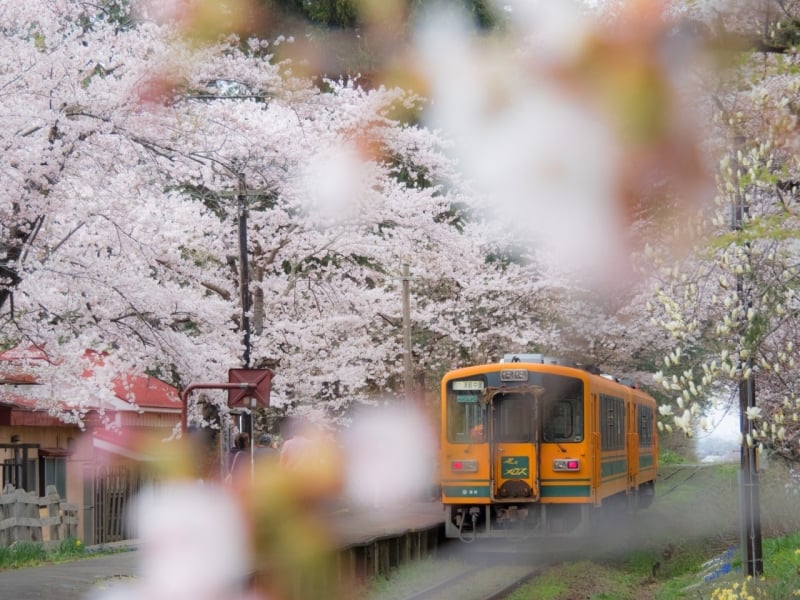
Image credit: Tohoku Tourism Promotion Organization Official Website
Whether it’s the sight of local trains passing through tunnels of cherry blossoms, or tourists rowing boats against the backdrop of cherry trees, spending a day at Ashino Park in Aomori is surely going to amaze you. Recognised as one of the best hanami spots in Japan, it hosts the Kanagi Sakura Festival from late April to early May during the cherry blossom season every year. Home to approximately 1,500 cherry trees, a children’s zoo, and boats for rent, this sakura spot is a well-loved retreat for locals.
Nonetheless, its main highlight is undoubtedly the classic Tsugaru Railway passing through the park, forming a stupendous view that leaves visitors in awe. To get here, you can take the JR train to Goshogawara Station, and then transfer to the Tsugaru Railway Line. Enjoy the scenery along the way as you’ll be surrounded by stunning lines of pink sakura trees towards the end of the journey! Board off at Ashinokōen Station, and the park entrance is just a short three-minute walk away.
Also read: The Best Places to See a Breathtaking Springtime in Tohoku
Getting the JR EAST PASS
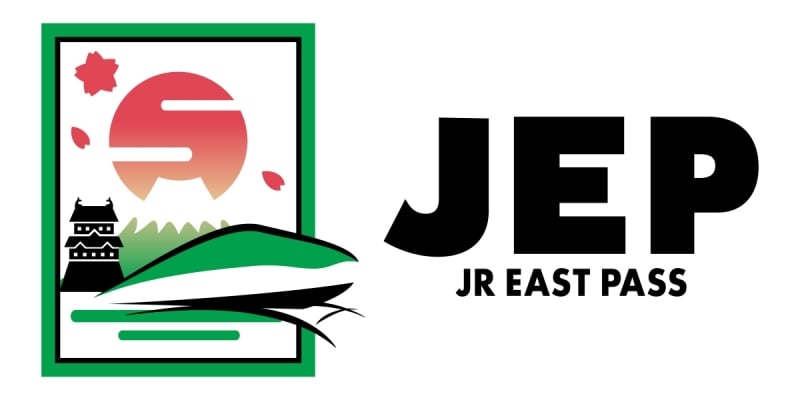
Image credit (L-R): JR EAST
The JR EAST PASS is a discounted travel pass specifically designed for non-Japanese passport holders. It offers unlimited rides on JR East lines, as well as the Tokyo Monorail lines, and Aoimori Railway Line for 5 consecutive days. The rail pass offers cost savings for travel between destinations. So if you intend to explore all the gorgeous, less mainstream cherry blossom spots, this is an ideal choice for your journey.
The JR EAST PASS is valid for five consecutive days and there are two types to choose from — JR EAST PASS (Tohoku area) and JR EAST PASS (Nagano, Niigata area). Apart from that, there are also a few other rail passes that are popular among travellers, namely the JR TOKYO Wide Pass (valid for three consecutive days)’ the JR East-South Hokkaido Rail Pass and the JR Tohoku-South Hokkaido Rail Pass (both valid for six consecutive days); and the Hokuriku Arch Pass, which is valid for seven consecutive days.
How much does it cost?
The price of a JR EAST PASS depends on the type. The JR EAST PASS (Tohoku area) costs ¥30,000 (~S$278) for adults while the JR EAST PASS (Nagano, Niigata area) costs ¥27,000 (~S$251) per adult.
If you’re planning to get your hands on one, we recommend purchasing and reserving your seats via the JR-EAST Train Reservation for more convenience. Travellers who intend to use the JR EAST PASS should purchase it beforehand and collect the actual rail pass after arriving in Japan.
Also read: These Trains in Japan Will Take You to a Random Destination in the Country
What is the JR-EAST Train Reservation?
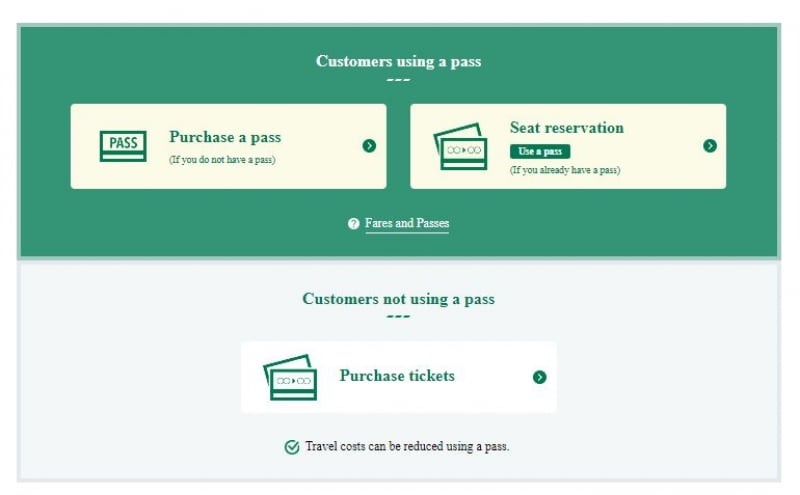
Image credit: JR East Train Reservation Official Website
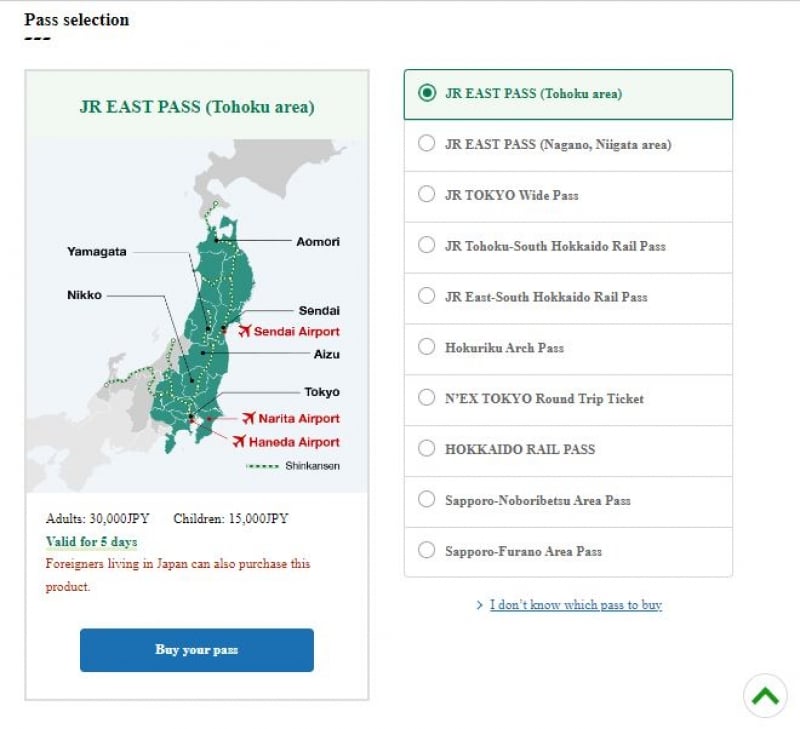
Image credit: JR East Train Reservation Official Website
The JR-EAST Train Reservation is an official website that allows you to purchase a JR EAST PASS and reserve a seat while enjoying its benefits. To do that, you first need to register an account on the website. Fret not, registration is completely free. From there, you can easily purchase the rail pass you want, and even reserve your preferred seat, as early as one month beforehand.
We highly recommend doing this as the trains can be quite crowded during the cherry blossom season as locals travel around the country for hanami (cherry blossom viewing). So, in order to ensure you have a seat on an otherwise full train, make sure you reserve your seats before arriving in Japan.
Note: Credit card information is required when purchasing the passes.
After purchasing, you’ll obtain a confirmation email with a QR code inside, which can later be used when collecting the pass together with your passport. You can either collect it from various pick-up locations (check the full list here); or get it from a Reserved Seat Ticket Vending Machine with a passport reader, which is different from the ones that offer normal ticket purchases. Only machines with a passport reader allow for the collection of the JR EAST PASS.
Why use the Reserved Seat Ticket Vending Machine?
Know that it can be very busy when you queue at the counter, particularly during rush hours and at popular train stations. Travellers who have already purchased the pass from the JR-East Train Reservation can now skip the queue and get the JR EAST PASS via the Reserved Seat Ticket Vending Machine with ease.
The machines that can be used to collect the JR EAST PASS are equipped with passport readers, so you’ll be able to easily differentiate them from the ones that sell normal tickets. Simply collect the pass by scanning the passport, as well as entering the QR code, pick-up code, or the credit card used earlier when purchasing the pass on the JR-East Train Reservation website.
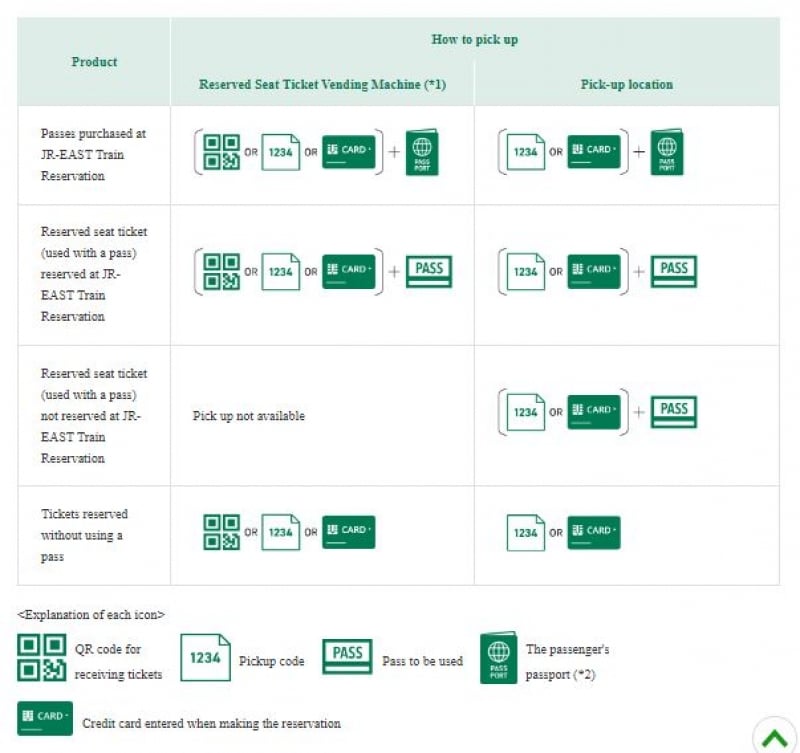
Image credit: JR East Train Reservation Official Website
You can find a summary of the requirements for picking up rail passes and seat tickets in the infographic above. For a step-by-step guide on how to use the Reserved Seat Ticket Vending Machines with passport readers, as well as the locations of these machines, click here.
Also read: Everything That Went Wrong During My First Trip to Japan and South Korea
So there you have it — a list of the best sakura spots in Northeastern Japan that you can explore via the trains and a JR EAST PASS. Book yourself a JR EAST PASS via the JR-East Train Reservation now, and revel in the beauty of cherry blossoms, all while benefiting from time savings and enjoying discounts on your travels!
This article was brought to you by JR East (East Japan Railway Company). For more information on the JR-East Train Reservation, check out this guide on JR Times.




